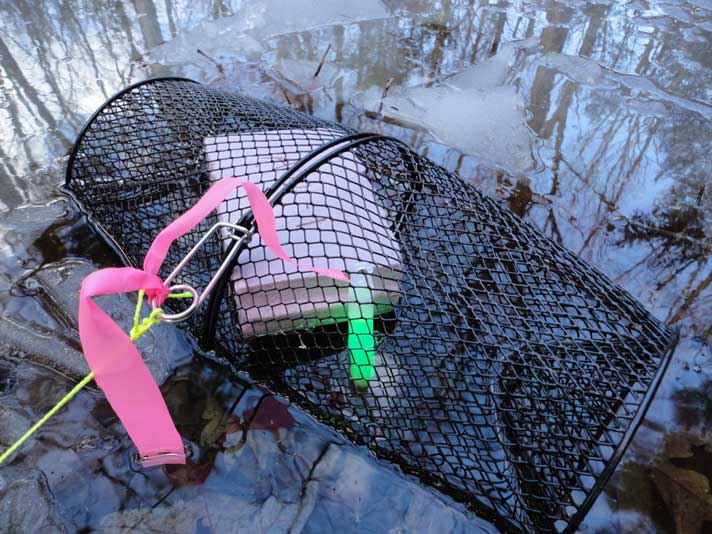Research funding for herps is often limited, so the use of these lighting devices speeds up the research.
Researchers at Penn State have discovered an inexpensive way to trap adult salamanders and frogs without harming them or the environment… by using glow sticks. That's right, those self-contained, temporary light sources easily attract salamanders and frogs, enabling researchers to better monitor and study the amphibians in the vernal pools that they inhabit during times of reproduction.

David Muñoz/Penn State
A glow stick attached to a funnel trap to capture amphibians.
"This work is important because research funding is often limited, especially when we're talking about amphibians and reptiles compared to mammals or other charismatic species," David Miller, assistant professor of wildlife population ecology, College of Agricultural Sciences at Penn State, told Penn State News. "With a warming climate, monitoring data will become only more important for informing conservation decisions. If we can find a way to improve our capture rate, it is going to mean less time, effort and expense to study amphibians."
The researchers spent nine nights out in the field trapping amphibians and captured 4,935 amphibians in 12 vernal pools, all without aquatic vegetation but with leaf-litter bottoms. The presence of glow sticks increased the average number of captured spotted salamanders (Ambystoma maculatum) by more than three times, Jefferson salamanders (Ambystoma jeffersonianum) at a four times rate of increase, wood frogs (Lithobates sylvaticus) by three times, and eastern newts (Notophthalmus viridescens) by as much as six times, compared to control traps without the glow sticks.
Want To Learn More?
Natural History Of The Spotted Salamander
David Muñoz, a doctoral degree candidate in ecology at the university, came up with the idea to bait the traps with the shiny, self-contained lighting elements. The research on the use of glow sticks was published in the Herpetological Review. The use of glow sticks was focused on adult amphibians, according to lead researcher Michael Antonishak, a wildlife and fisheries science undergrad at Penn State.
“We specifically focus on the adult stage of amphibians because life history suggests adults play the most critical role in population persistence,” he said in Penn State's report. “Capturing adults also make techniques such as mark-recapture feasible, providing estimates of abundance and survival to improve conservation decisions.”
Why the glow sticks attract amphibians is unclear, but researchers speculate that the light attracts organisms that the amphibians might eat.


